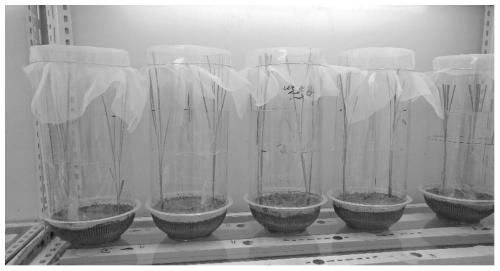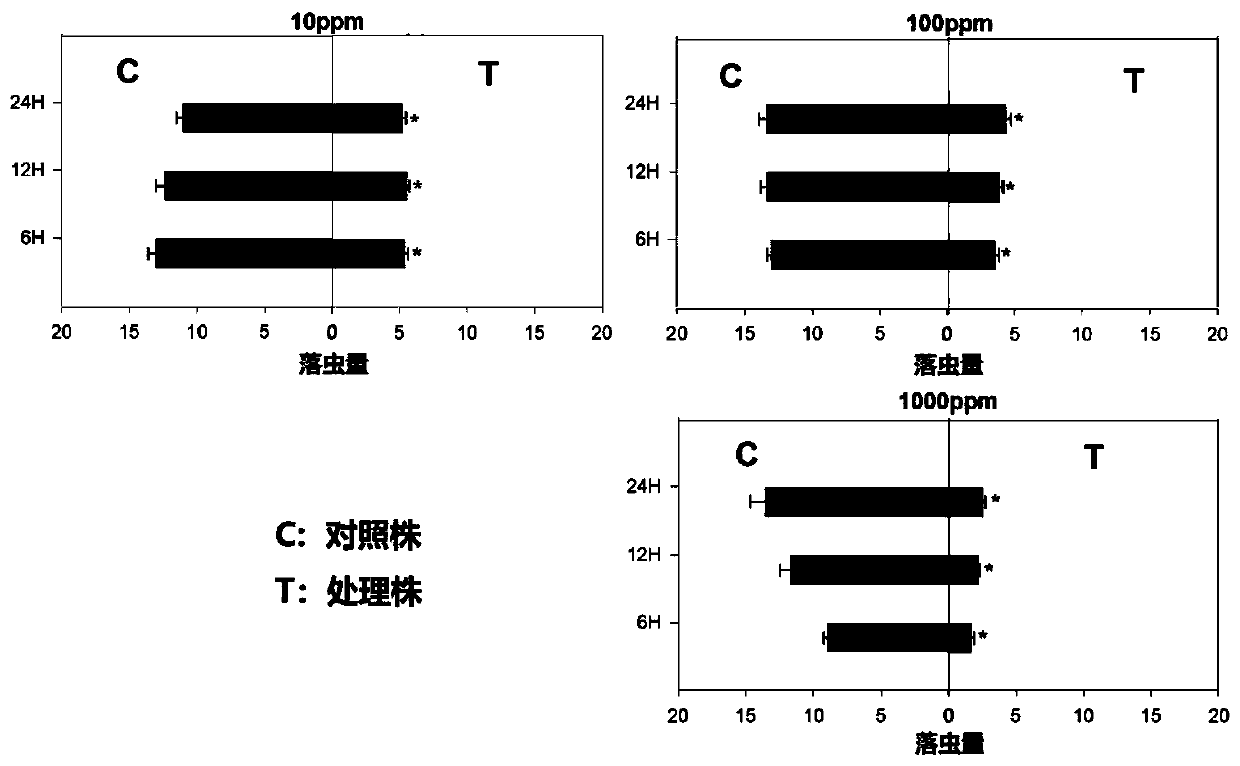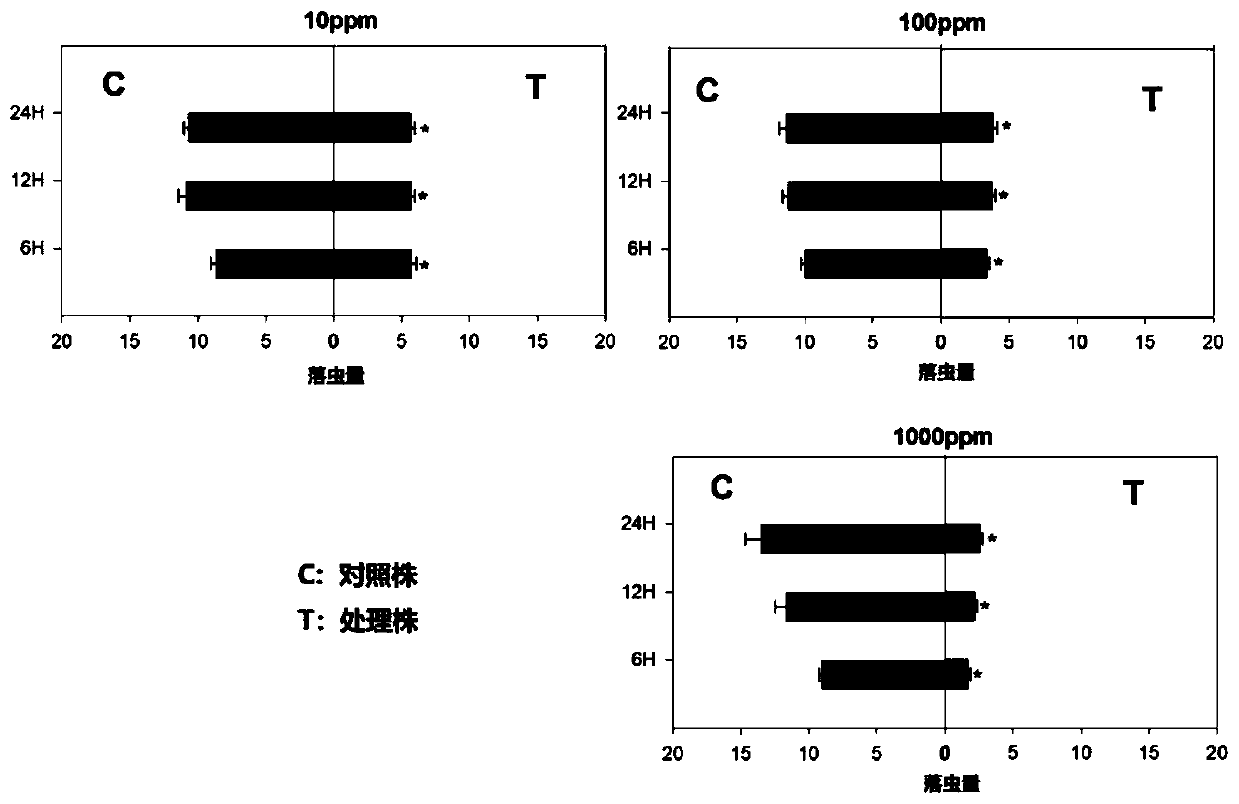Application of xanthoxylin as rice planthopper repellent
A technology of prickly ash oil and rice planthopper, applied in animal repellent, application, pest repellant, etc., can solve the problems of unreported application and achieve simple preparation, good repellent effect, and environmental friendliness
- Summary
- Abstract
- Description
- Claims
- Application Information
AI Technical Summary
Problems solved by technology
Method used
Image
Examples
Embodiment 1
[0027] Example 1: Determination of the repellent activity of prickly ash oil against brown planthopper and planthopper natural enemy Lygus spp.
[0028] 1.1 Materials and methods
[0029] The tested insects were indoor populations of brown planthopper and green Lygus black-shouldered. Nilaparvata lugens took 3-instar nymphs and 7-day-old female adults to conduct repellent tests, and green Lygus black-shouldered nymphs took 3-instar nymphs and 7-day-old male and female adults to repel respectively. Test; the test compound is Zanthoxylum oleifera, which was purchased from Tokyo Chemical Industry Co., Ltd., Japan. The control repellent is the ethanol extract of Zanthoxylum bungeanum extracted in the laboratory, which is a soluble oily concentrate.
[0030] Bioactivity assay method:
[0031] The repellent activity was measured by stem spray method, see figure 1 . Two rice plants with a height of 30 cm are transplanted into a flower pot with a diameter of 18 cm at a distance of...
Embodiment 2
[0042] Example 2: Determination of the repellent activity of prickly ash oil to white-backed planthopper
[0043] 2.1 Materials and methods
[0044]The tested insects were indoor populations of white-backed planthoppers, and the 3rd-instar nymphs and 7-day-old female adults were used for repellent tests; the test compound was Zanthoxylum oleifera, which was purchased from Tokyo Chemical Industry Co., Ltd., Japan.
[0045] Bioactivity assay method:
[0046] The relevant repellent activity was determined by the stem spray method, and the relevant repellent activity test device is shown in figure 1 . Two rice plants with a height of 30 cm are transplanted into a flower pot with a diameter of 18 cm at a distance of 12 cm, and a transparent cylindrical polyvinyl chloride bucket with openings at both ends is placed on it. Take an appropriate amount of Zanthoxylum oleifera, add acetone to dissolve it in a 1:1 mass ratio, add Tween 20 to make a 20mg / ml Zanthoxylum bungeanum mother ...
Embodiment 3
[0055] Example 3: Determination of the repellent activity of prickly ash oil to SBPH
[0056] 3.1 Materials and methods
[0057] The tested insects were indoor populations of SBPH, and the 3rd-instar nymphs and 7-day-old female adults were used for the repellent test; the test compound Zanthoxylum oleifera was purchased from Tokyo Chemical Industry Co., Ltd., Japan.
[0058] Bioactivity assay method:
[0059] The relevant repellent activity was determined by the stem spray method, and the relevant repellent activity test device is shown in figure 1 . Two rice plants with a height of 30 cm are transplanted into a flower pot with a diameter of 18 cm at a distance of 12 cm, and a transparent cylindrical polyvinyl chloride bucket with openings at both ends is placed on it. Take an appropriate amount of Zanthoxylum oleifera, add acetone to dissolve it in a 1:1 mass ratio, add Tween 20 to make a 20mg / ml Zanthoxylum bungeanum mother solution containing 1wt% Tween 20, and then add ...
PUM
 Login to View More
Login to View More Abstract
Description
Claims
Application Information
 Login to View More
Login to View More - R&D Engineer
- R&D Manager
- IP Professional
- Industry Leading Data Capabilities
- Powerful AI technology
- Patent DNA Extraction
Browse by: Latest US Patents, China's latest patents, Technical Efficacy Thesaurus, Application Domain, Technology Topic, Popular Technical Reports.
© 2024 PatSnap. All rights reserved.Legal|Privacy policy|Modern Slavery Act Transparency Statement|Sitemap|About US| Contact US: help@patsnap.com










